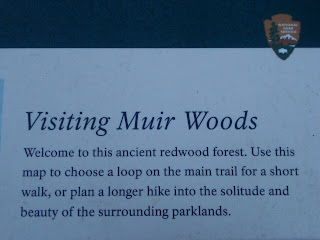Informational, Innovative, Imaginative, Extraordinary, Picturesque
Redwoods Written and Illustrated by Jason Chin
Published by Flashpoint/Roaring Brook Press Copyright 2009
"A contagious celebration of the relationship between information and imagination, the pure joy of learning" - Horn Book
"A contagious celebration of the relationship between information and imagination, the pure joy of learning" - Horn Book
This vivid and alluring description of the astounding Redwood trees by Jason Chin, gives readers insight to the beauty and majesty found in nature. The story's inventive format and unique blend of non-fiction and fiction uses illustrations to invite readers to activate their imagination and explore what the Earth and its creations have to offer. The story begins using illustrations before the text is even introduced. A boy finds this text on a bench and as he opens it and begins to read, he leaves New York City and is transformed to the amazing forest. The text provides detailed information and facts about Redwood trees, their history, environment, and their purpose to other organisms. The book concludes as the main character accidentally leaves behind this text. Another child finds is and begins her own journey through the pages.
Reading Level: Lexile Framework NC1100L, Grade 5/6
Suggested Delivery: Read Aloud
Description: Blend of Non-fiction with Fiction Electronic Resources:
Book Website
This is the link to the official Redwoods website. The site contains information about the author and what he had do when he conducted his research for this text. There is also a link to Redwood Facts, a brief synopsis of the text, and links to teacher resources that include sample lesson plans.
 Redwood National and State Parks Site
Redwood National and State Parks SiteThis is a link to the United States National Park Service website that provides additional background information about Redwood trees. The site contains expository articles to further explain the scientific background of these trees and their climate. There are also many pictures, teacher resources, and opportunities for students to get more involved in the preservation and protection of the National Parks.
Key Vocabulary: Ancestors, Condense, Diameter, Endangered, Epiphytes, Evaporation, Fungal, Infestation, Jurassic, Penetrate, Sapling, Sprout, Tannin
Teaching Suggestions:
- Use this text in science during the study of populations and ecosystems.
- Use this text in social studies to review that Redwood trees have their own past and historical significance especially in United States, where they are predominately found. Discuss how they impacted Native Americans, the Gold Rush, and Teddy Roosevelt's plan for conservation of natural wildlife.
- Use the illustrations in this text to support literary elements of circle stories in which the story begins and ends in the same place.
Pre-Reading- Show students a picture of a Redwood tree by itself. Ask students what they know about the tree. Then show them another picture that provides greater perspective because people or objects next to the tree demonstrate the grandeur and size of Redwoods. Also, pre-teach the vocabulary words using vocabulary cards and images. While the text itself only requires literal comprehension, the content-specific vocabulary must be introduced before reading so students can make the connections and understand what the author is trying to say about Redwood trees.
During Reading- Have students use split-page note taking to record the information and facts that are presented in the text. One side of their notes should contain a question and the other side will answer that question. See the example below:
How long can Redwoods live? More than 2,000 years
How tall can Redwood trees be? Usually more than 200 feet tall
What kinds of animals/insects Bald eagles, ospreys,
live in Redwoods? woodpeckers, flying squirrels,beetles, yellow banana
slugs, etc.
Post-Reading- Students can demonstrate their comprehension of the text and the information by participating in a Professor Know-It-All dialogue, in which they share everything they learned from the text.
Writing Activity: Have students write an expository poem about Redwood trees. Students can focus on Redwood trees' history, their environment, their purpose, or simply their beauty. Specific details and facts should be included to support the accuracy of the poem. Students can then illustrate their poem.
 |
| Ms. Belcher took a trip to Muir Woods in Northern California, Jan 2011 |
 |
| Around the trunk of a Redwood tree |
 |
| Ms. Belcher showing how little she looks next to a Redwood! |



No comments:
Post a Comment